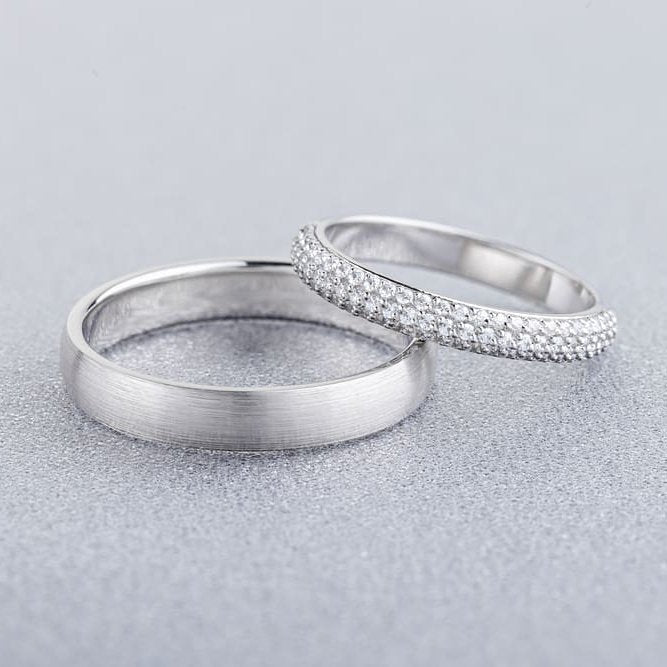Your Cart is Empty
Site under development -30% on the General Public Collection / CODE: "ICEVVS " - LIMITED STOCK
Site under development -30% on the General Public Collection / CODE: "ICEVVS " - LIMITED STOCK

At first glance, it's difficult for the untrained eye to tell the difference between white gold and sterling silver. They're both silver in color, but the two metals are very different beyond their initial appearances.
Here's what you need to know when looking for silver-colored jewelry.
White gold is a mixture of pure gold and other metals, which makes the metal harder and whiter in appearance. Typically, the metals used in white gold are nickel, silver, or palladium, and the properties of white gold vary depending on the alloy used.
Just like yellow gold, the purity of white gold is measured in karats. So, if a white gold ring is 18 karats, this means that the ring is composed of 75% gold (18 karats divided by 24) and 25% other metals.
Silver is a precious, lustrous metal, prized for its beauty and electrical conductivity. It has been used for centuries to create coins, decorative pieces, and jewelry.

When it comes to jewelry, silver is often alloyed with copper to give it strength, as it is a relatively soft metal. When silver is mixed with copper, it is called sterling silver. When shopping for sterling silver, you may notice the metal is labeled "925," meaning it contains 92.5% pure silver and 7.5% other metals.
The type of jewelry you're looking for will weigh heavily in your decision between white gold and silver. Looking for an engagement ring? Read about the differences between the two to help you make your decision.

Sustainability
When buying a piece that you'll wear every day, like an engagement ring, white gold is a much better choice in terms of durability and wear resistance. However, keep in mind that the hardness of white gold depends on its purity (i.e., karat).
Silver is soft and easily scratched and may change shape slightly with wear, while white gold is resistant to both corrosion and impact.
Affordability
Silver is one of the most affordable metals for jewelry, making it a perfect material for the fashion jewelry you add to your wardrobe. However, the added durability of white gold increases the price of this metal. White gold costs more than silver, but less than platinum, making it moderately affordable.
Nickel allergy?
One of the most common metal allergies is nickel, which can be found in both white gold and silver.
As stated above, sterling silver is 92.5% pure silver alloyed with copper, but in some cases nickel may be present in the remaining 7.5% of metals.
When it comes to white gold, nickel is typically used as an alloy, but white gold is often plated with rhodium, a silvery-white metal in the platinum family. Initially, the rhodium plating protects wearers from the nickel in the gold, but it eventually wears off, which can cause skin irritation in cases of allergies.
Maintenance and care
White gold and silver require a certain level of maintenance, like all jewelry.
Every few years, your white gold jewelry will require a new application of rhodium by your jeweler, which will easily restore the white finish. Without this reapplication, your jewelry will "yellow."
Silver, on the other hand, requires regular cleaning and polishing to prevent tarnishing. While sterling silver tends to tarnish, it never rusts, which is a plus.
Whatever you decide, be sure to visit your jeweler twice a year for a professional checkup and cleaning. Looking to clean your jewelry at home? Check out our jewelry cleaning and care guide !